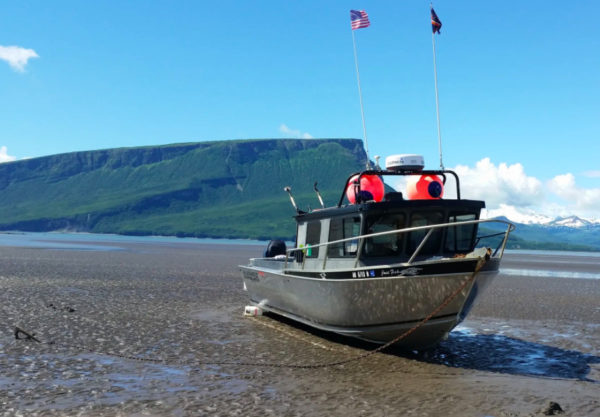
Scientists are still digging for answers about the low abundance of adult razor clams on the east side of Cook Inlet. Meanwhile, charter companies are taking passengers over to the west side, where razors abound.
“The west side is like Deep Creek and Clam Gulch were 20, 24 years ago,” asid Ernie Kerby. He’s owned Bottom Line Charters in Ninilchik for almost three decades.
In response to the crash of clam populations, the Alaska Department of Fish and Game closed east side beaches to personal and sport-use clamming in 2014. It announced last week it will close those beaches again in 2021.
At one time, the 80 miles of shoreline from the mouth of the Kenai River to the Homer Spit was home to the most popular clam fishery in Cook Inlet. That includes the beaches of Clam Gulch, a town named for its abundance of razor clams.
Scientists aren’t sure why the crash initially happened about a decade ago. What they do know is that stocks aren’t rebounding, said Mike Booz, the Lower Cook Inlet sportfish area manager for Fish and Game.
He said the department has successfully incorporated new juvenile clams into the area, a process known as “recruitment.” But as they reach adulthood — three to five years old — they’re dying off.
“Unfortunately, it’s not a perfect recovery,” he said. “During that time, or transitioning through that time, growth has been really poor for razor clams, particularly in 2017 and 2018. The adult survival of razor clams through that time hasn’t been very good. So, yes, you’re getting new clams, but they’re not growing and they’re not surviving for the population to rebuild to what it was, historically.”
This high rate of mortality among adult clams is likely due to a confluence of factors, including environmental stressors and changes in habitat. The instability of ocean water temperatures could be part of the equation.
“Overall, climate change, that’s only one component of it,” Booz said. “Climate change doesn’t cause clams to leave the beach. It definitely influences their growth rate, or the primary productivity of plankton in Cook Inlet, and that likely affects razor clam abundances on these beaches.”
The closures have driven more people to the beaches on the west side. Off the road system, those shores are only accessible via boat or plane.
Kirby does the 30-mile ride to the Crescent River drainage, south of Polly Creek, with his passengers. It takes about an hour and fifteen minutes from Ninilchik.
He’s always taken his passengers to the west side. But since the closure on the east side, many others are, too.
“A lot more of the guys in Ninilchik are starting to go over there,” he said.
That’s also where the commercial clammers, like Nikiski’s Pacific Alaska Shellfish, get their stock.
There are no harvest limits on the west side. Kirby said he’s not worried about the area getting overfished because there are enough clams to go around.
It’s not clear to Fish and Game why the west side seems to be doing much better than its eastern neighbor. And it’s hard to know how dwindling numbers on the peninsula stack up against their counterparts on other Pacific shores: Razor clams in the east part of Cook Inlet are more studied than others, due partly to the robustness of the fishery.
“Further south, in Oregon and Washington would probably be the next place where razor clams are really studied well enough to make a comparison between east Cook Inlet,” Booz said. “And razor clams in Oregon and Washington right now are doing great.”
The department continues to monitor clam stocks on both shores and submitted a proposal this year to develop a management plan for east Cook Inlet razor clams. Currently, there’s no management plan that would regulate harvests in the case of a reopening.
Kirby said he trusts the department to protect the east side fishery.
“I would want them to show at least two years, two consecutive years of growth,” he said. “Good, sustained growth. I’m losing business if they keep it closed, but in the long run, it’s going to be better for everybody.”
That department’s proposal will be discussed at the board’s scheduled meeting in March.




